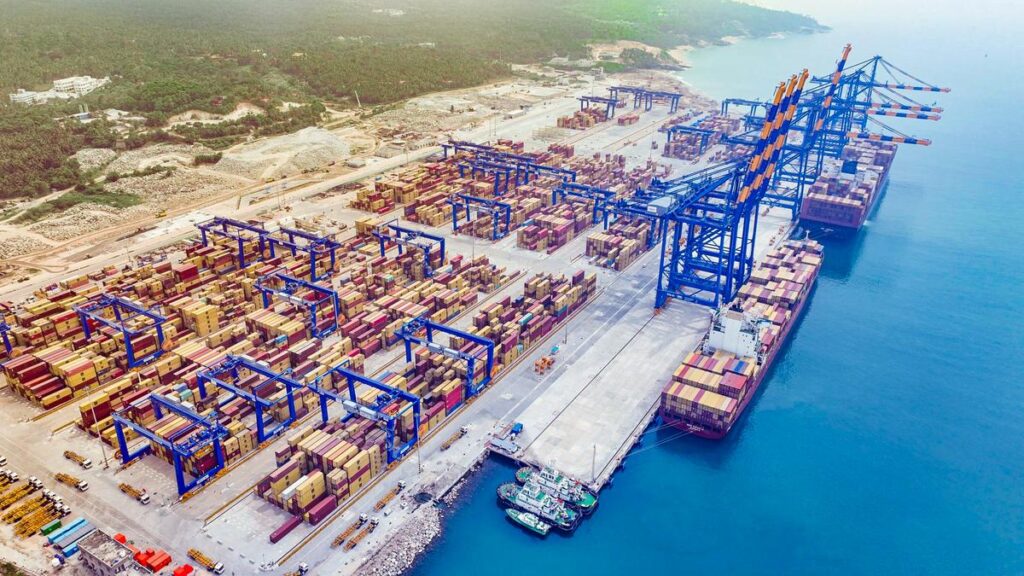
Thiruvananthapuram, Apr 18 (ANI): A view of the Vizhinjam International Seaport, India’s first semi-automated transhipment port, which will be dedicated to the nation by Prime Minister Narendra Modi on May 02, in Thiruvananthapuram on Friday. (ANI Photo)
| Photo Credit:
ANI
The Adani Group-run Vizhinjam International Deepwater Multipurpose Seaport, the country’s first dedicated container trans-shipment port, has achieved full capacity utilisation of 1.2 million twenty-foot equivalent units (TEUs) handling over a lakh container a month, in its first year of operations. There is now an urgency to expand the infrastructure with an investment around ₹10,000 crore planned, a company spokesperson said.
“We never expected to reach 8.5 lakh TEUs in 10 months. We thought it would be half of it. But, looking at the success of phase one, why wait till 2045 for the second phase. We are advancing the next phase of expansion so that the extended terminal will be ready by 2028,” the spokesperson added.
In May 2024, Prime Minister Narendra Modi inaugurated the terminal. In July, the first ship berthed at the 800 m container terminal for trials and commercial operations started only in December. In the last one year, the terminal handled over 380 container ships, including MSC Irina, the world’s largest container ship, in June this year, he said.
Exim cargo
The terminal will start handling Exim cargo in three months, and this is especially useful for industrial clusters like textiles in Tiruppur in southern Tamil Nadu, who can then use Vizhinjam instead of global transshipment hubs like Colombo, Jebel Ali or Singapore, the spokesperson said.
“We are building connectivity to NH 66. Once this is ready, the Exim cargo will be handled. Around 2,000 trucks a day are likely to be handled,” he said. Already, companies like Volvo (spare parts), IKEA and Marks & Spencer have sought enquiries on moving boxes through the port, he added. Nearly 25 per cent of the cargo could be Exim cargo in future.
The development of Vizhinjam significantly reduces India’s reliance on foreign ports for transshipment, which previously accounted for 75 per cent of such operations.
Expansion plan
The planned expansion of the port will involve extension of the existing berth by 1.2 km from the existing 800 meters, extension of breakwater by 920 m, construction of a 1.2 km multipurpose berth, bunkering facilities, enhanced warehousing, and inland connectivity upgrades. The number of cranes will be increased to 90, including ship-to-shore cranes, from the present 32. Once the berth (in a single line) is expanded to 2 km, it can handle five large vessels at a time from the existing two, said a company spokesperson, adding that the work will start in September.
Containers from Europe, South America and Africa come to Vizhinjam in large vessels are unloaded in the terminal and then loaded in smaller, feeder ships for destinations like South East Asia, and vice versa. At present, no container is meant for India, the spokesperson said.
The international shipping lane (East-West and Far East-Gulf route) is about 10 nautical miles (NM) from Vizhinjam, making it easier for large ships to visit the terminal. Colombo is also located at the same distance from the lane, he said. While the cost is almost the same in both the terminals, the time will be reduced by two or three days by avoiding Colombo, he said.
(The reporter was in Vizhinjam at the company’s invitation)
More Like This
Published on July 13, 2025

